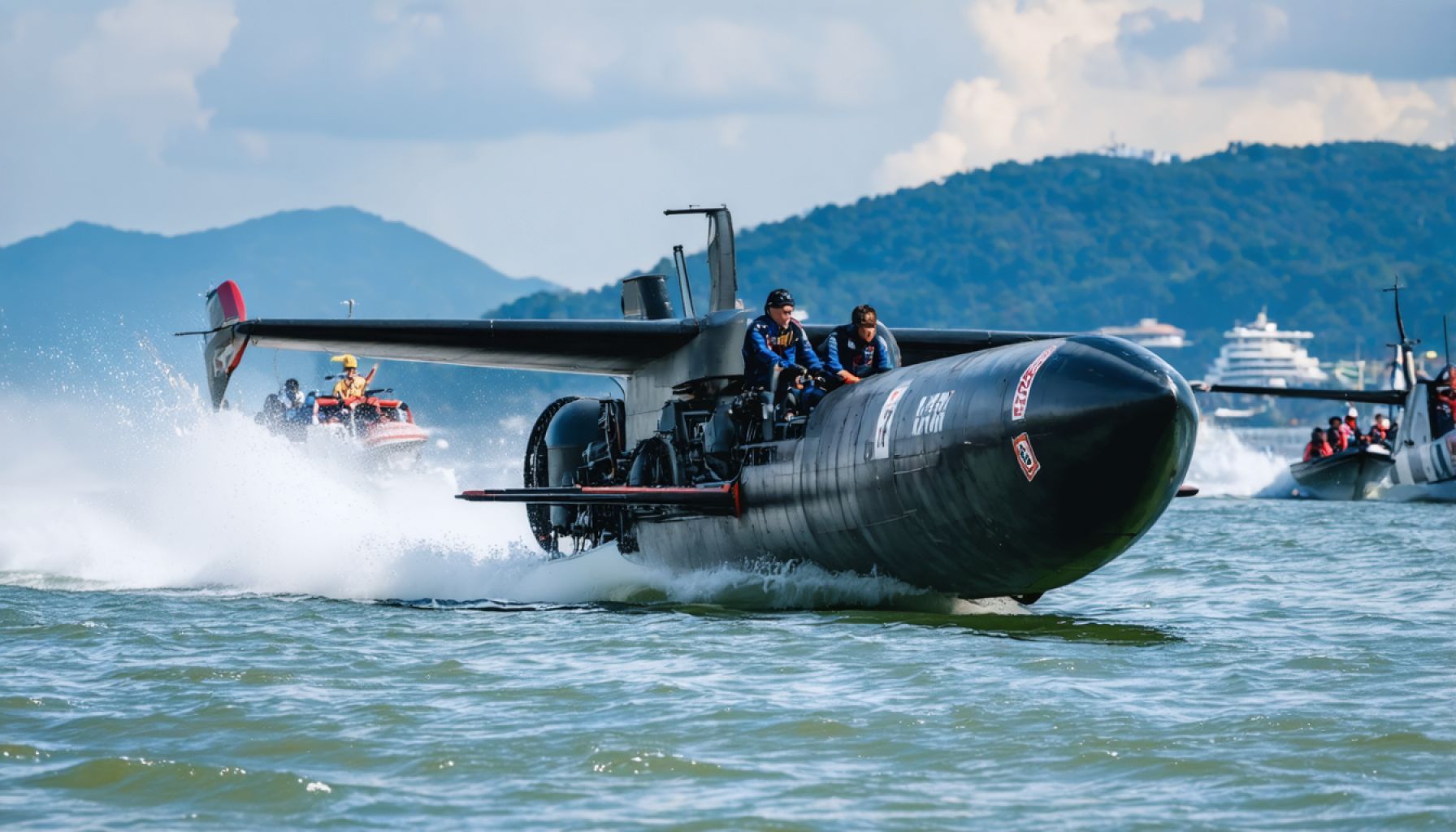- Newly introduced engines in Fukuoka’s boat races present challenges for seasoned racers and bettors due to their unpredictable performance.
- Top single lap speeds have emerged as a key metric, providing significant insights for bettors amidst the uncertainty.
- Statistics reveal that 70% of racers with top display times consistently reach the podium, increasing to 80% in select races.
- Diving into one-lap time metrics offers a strategic advantage, highlighting the importance of data-driven decisions in racing.
- Racers and enthusiasts adapt by focusing on lap times to find clarity and gain an edge, even with the new engine dynamics.
Engines roared to life in Fukuoka as a new wave of adrenaline-pumping boat races swept the city. Amidst the deafening hum and spirited cheers, seasoned racers like Yuichi Kakura grappled with a challenge beyond their control—newly introduced engines. Although Kakura reveled in leading power rankings, he admitted uncertainty about his engine’s potential, confessing that it might take another racer to uncover its full capabilities with a different propeller configuration. The vast engine disparities tested even the most skilled competitors, leaving bettors scratching their heads.
However, lurking behind the unpredictable engine performances lies a strategic gem: analyzing the display times for the top single lap speeds. This statistic has emerged as a beacon for astute bettors. Data tells a compelling story—as shown in recent races, a staggering 70% of top performers consistently made it to the podium, with 80% hitting the mark in two standout races. Whether engines are newly minted or ticking towards retirement, these times provide clarity amidst unpredictability.
In Fukuoka, sharp-eyed enthusiasts have found their advantage. Particularly during tumultuous times with new engines, diving deep into one-lap time metrics yields a winning formula. It’s a timely reminder that, in the thrilling world of boat racing, numbers often reveal truths that the roaring engines try to conceal. Keep your eyes on those crucial times, and even amidst the pace and unpredictability of the race, control of your fate edges a little closer.
Unlocking Success: Decoding Boat Racing with New Engine Strategies
Understanding the New Era of Boat Racing in Fukuoka
Boat racing in Fukuoka has taken on a new dynamic with the introduction of cutting-edge engines, presenting challenges and opportunities for racers and bettors alike. These engines, while packing potential, have introduced unpredictability. To navigate this landscape, here are insights into the unique situation in Fukuoka and how you can capitalize on this chance.
How-To Steps & Life Hacks: Maximizing Your Strategy
1. Track Display Times:
– Focus on the one-lap display times to gauge potential winners. A majority of podium placements correlate with top single lap speeds.
2. Diversify Propeller Configurations:
– As racer Yuichi Kakura suggests, experimenting with different propeller setups may unlock hidden performance in new engines. Consider the rationale behind modifying configurations to accommodate new engine dynamics and how this could affect speed.
3. Trend Spotting:
– Analyze past race data for patterns. Regular winners often repeat, and a keen eye can discern trends that others might overlook.
Real-World Use Cases: Applying the Data
In past races, an astute understanding of engine performance disparities has led sharp bettors to consistent profits. For instance, using time metrics has allowed them to identify undervalued racers while others confront engine unpredictability.
Market Forecasts & Industry Trends
The boat racing industry is seeing a technological evolution with new engine implementations. As engines become more advanced, historical data will play a crucial role in anticipating performance outcomes. Future advancements are expected to focus on efficiency and consistency, reducing the current variance observed in races.
Reviews & Comparisons: Engine Performance
With a variety of engine types now in play, reviews indicate mixed performance levels. Some engines excel in speed but struggle with endurance, while others show greater reliability. Comparing engines’ specifics and racers’ adaptability becomes essential for stakeholders.
Controversies & Limitations
Debate exists around the fairness and equity of introducing new engines, with some arguing that it creates an uneven playing field, emphasizing the necessity for adaptive strategies.
Features, Specs & Pricing
– Performance Variability: Notable variance even among ostensibly similar designs.
– Pricing: New technology engines are a significant investment, varying by manufacturer and specifications.
Security & Sustainability
New engines focus on improved emissions, aligning with sustainable practices. Ensuring compliance with environmental standards is an advantage of the current technological wave.
Insights & Predictions
Expect enhanced competition as racers and teams become adept at manipulating these new engines to their advantage. Future races will likely feature closer matches with improved engine refinement.
Tutorials & Compatibility
While specific tutorials for new engines are scarce, industry forums and communities offer insights into tuning and optimizing performance under varying race conditions.
Pros & Cons Overview
– Pros:
– Enhanced speed potential
– Opportunities for strategic advantage
– Cons:
– High variability in performance
– Increased complexity for racers
Actionable Recommendations & Quick Tips
– Always monitor one-lap speeds as a primary metric for betting.
– Engage with communities to share knowledge and strategies for new engine setups.
– Diversify propeller configurations to unlock optimal engine performance.
For more insights into the world of competitive racing and emerging technologies, visit Boat Racing.
